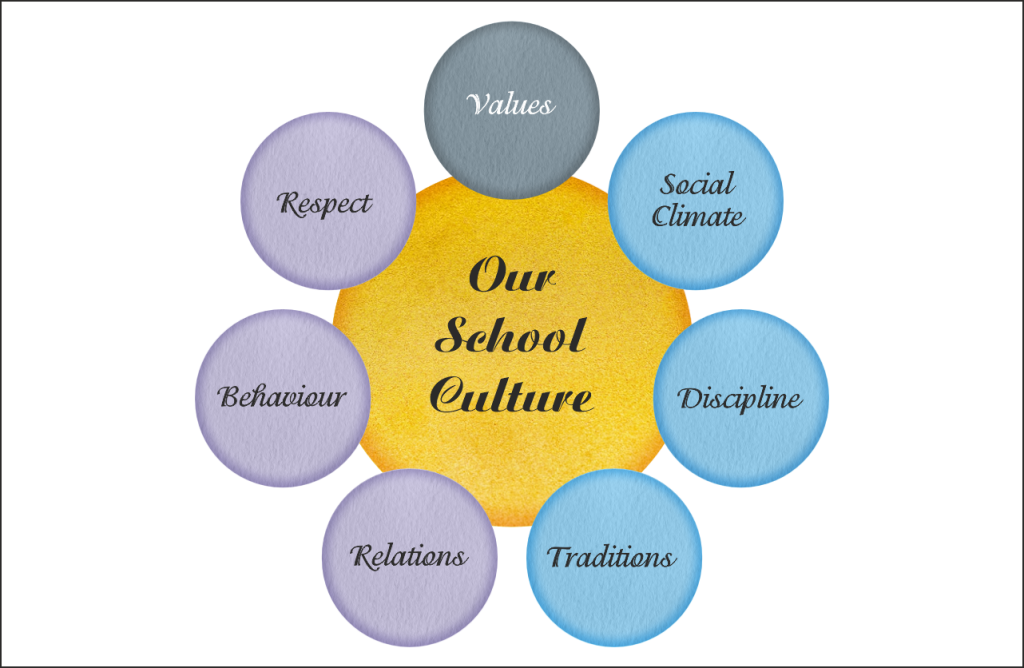In every thriving school, there is an invisible thread that binds students, teachers, leaders, and families together—a shared sense of purpose, belonging, and pride. This is what we refer to as school culture. While academic excellence remains a core focus, it is the school culture that shapes how we learn, work, interact, and grow. And contrary to common belief, building and nurturing this culture is not just the responsibility of the school leadership—it is everyone’s responsibility.
What is School Culture?
School culture is the heartbeat of the institution. It encompasses the values we uphold, the behaviours we model, the traditions we celebrate, and the expectations we set for ourselves. It shows how a new student is welcomed, how a struggling learner is supported, how a teacher is empowered, and how a parent is engaged.
At its best, school culture creates a safe, inclusive, and inspiring environment where everyone can thrive, not just academically, but socially and emotionally.
The Role of Leaders
As Chairman, I recognise that leadership sets the tone. Vision, policies, and strategic direction help anchor a school’s ethos. But culture cannot be mandated; it must be lived. Our school leaders and management teams must model the values we want to see—Integrity, Empathy, Resilience, and Collaboration. It starts at the top, but it must not stop there.
“A leader is the one who knows the way, goes the way, and shows the way.”
— often attributed to Swami Vivekananda
The Power of Teachers
Teachers are the everyday torchbearers of school culture. In classrooms, corridors, playgrounds, and parent meetings, they bring the school’s values to life. A teacher’s words of encouragement, the consistency of their expectations, the fairness in their decisions—these small moments build the larger culture. When teachers feel respected and supported, they naturally pass that same respect and care on to students.
“The teacher is not the giver of truth. He is a guide, a pointer to the truth that the student must find for himself.”— Bruce Lee, but often resonating with the Guru-Shishya Indian tradition
Students as Culture Carriers
Our students are not just recipients of culture—they are its strongest carriers. Every peer interaction, every leadership opportunity, and every act of kindness contributes to the tone of the school. When we empower students to take ownership of their learning environment through student councils, clubs, and classroom responsibilities, we help build a culture of accountability and pride.
“Man-making is my mission.” — Swami Vivekananda
(A powerful reminder that students are not just learners, but future leaders)
The Role of Parents and Community
Parents are our partners in this journey. Their involvement, feedback, and trust play a crucial role in strengthening the school ecosystem. When home and school share the same values and expectations, the cultural message is unified and powerful. Celebrating festivals together, volunteering time, attending school events—these are not just gestures, they are investments in culture.
“It takes a village to raise a child.” — African Proverb
(also echoed in many Indian traditions where the community is considered co-guardian of the child)
“Parents are the first teachers and the home, the first school.” – Ancient Indian saying
A Shared Commitment
A positive school culture does not emerge overnight. It is built brick by brick, moment by moment, and person by person. It requires alignment, communication, and above all, commitment from every member of the community.
As we move forward in our mission to provide holistic and value-based education, let us remember: creating a strong school culture is not the job of one, but the responsibility of all.
Let us each ask ourselves: What am I doing today to make my school a place where everyone feels seen, heard, and valued?
The culture we create today will shape the character of tomorrow’s citizens.
Dr G.S. Matharoo
Chairman
Prudence Group of Schools



